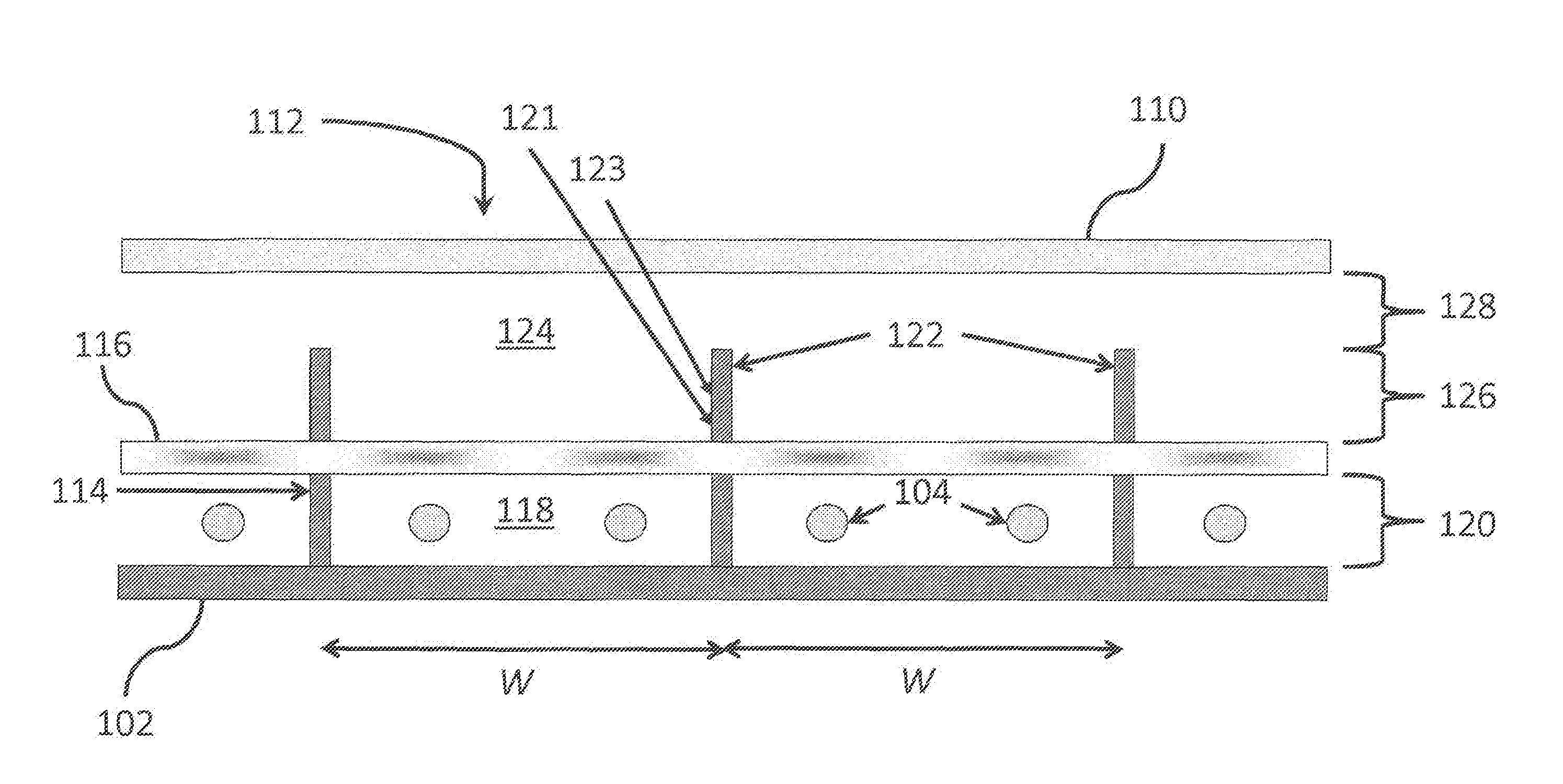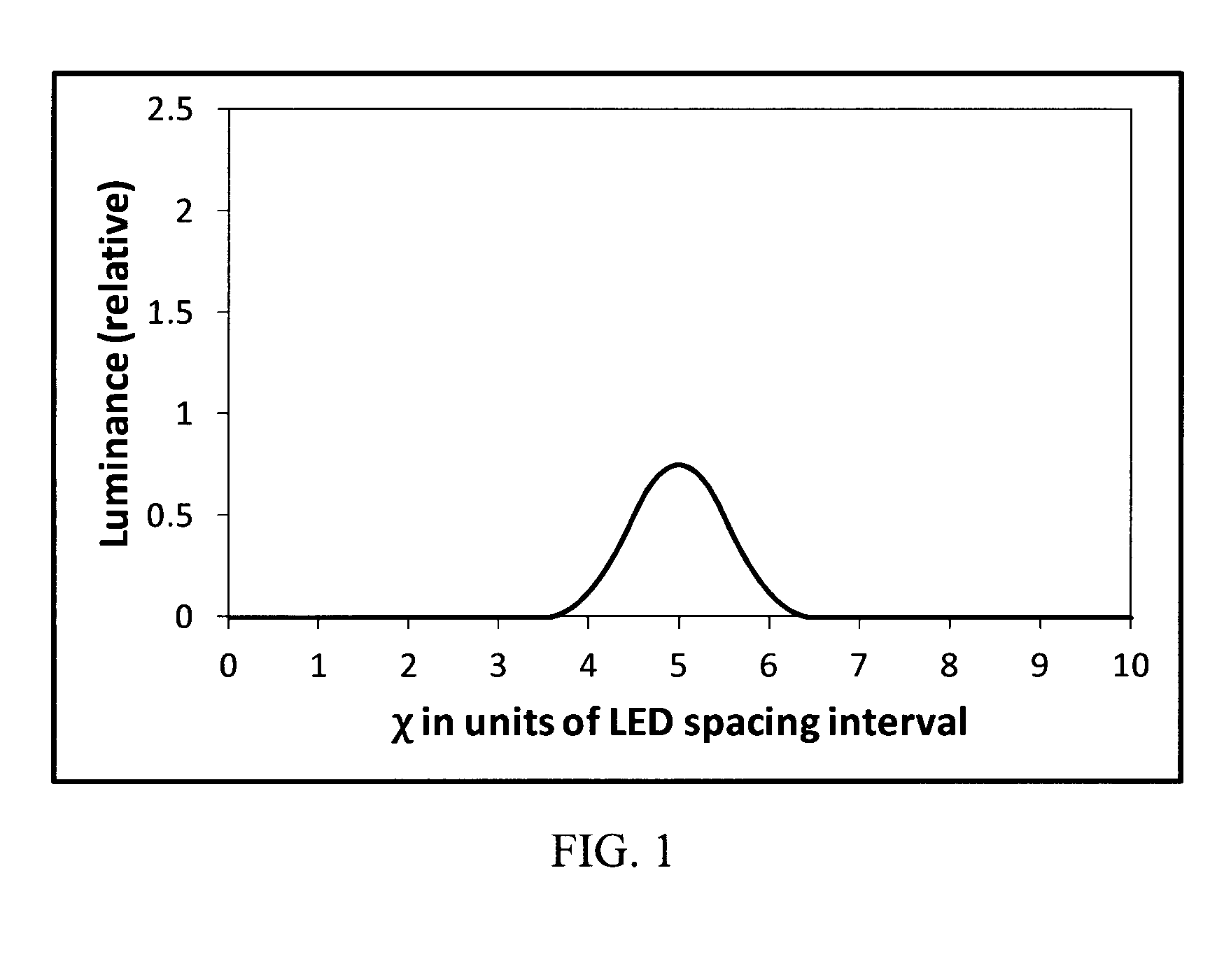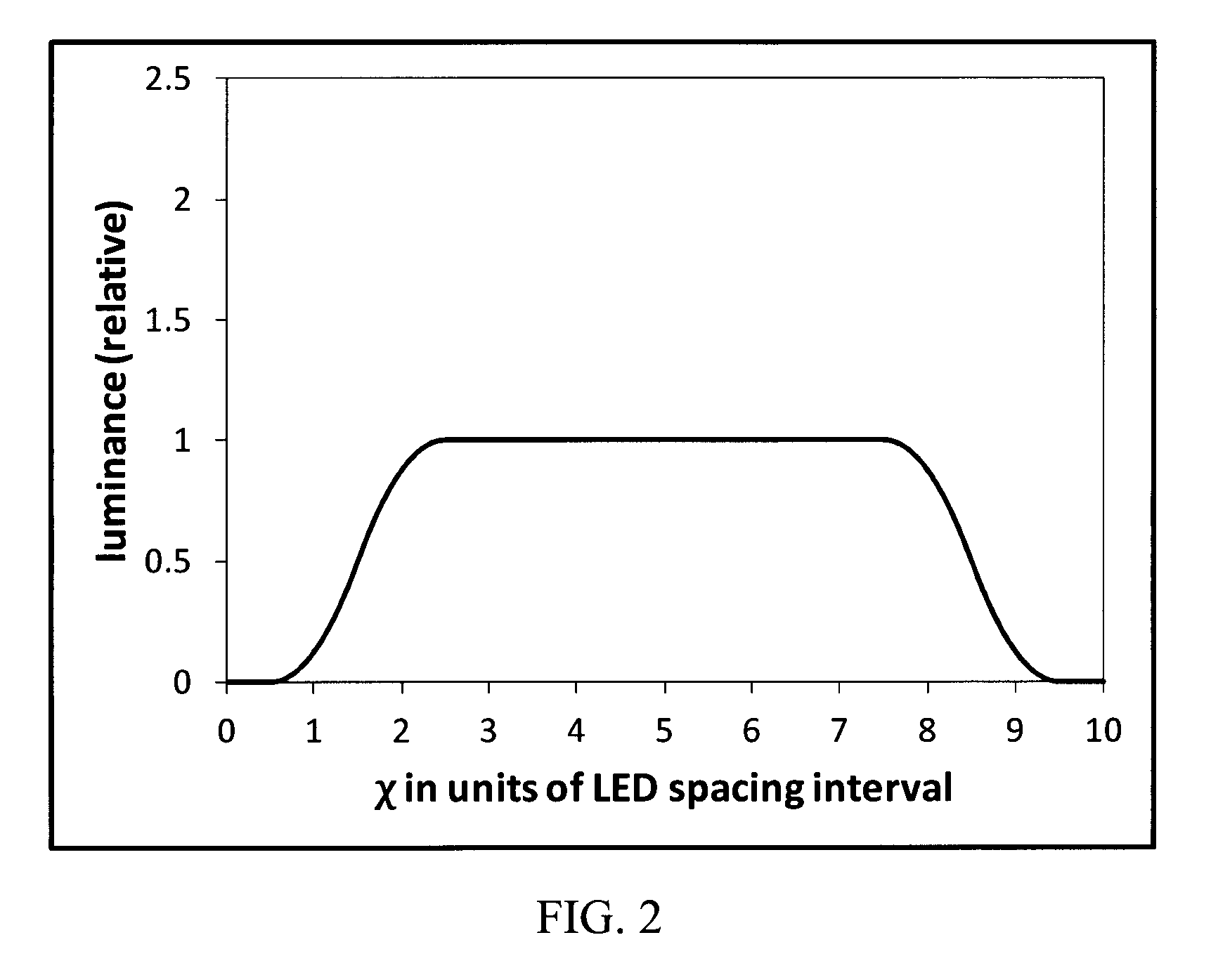High-uniformity limited-spread point spread function light emitter
a point spread function and light emitter technology, applied in the direction of light sources, lighting and heating equipment, lighting apparatus, etc., can solve the problems of non-uniform display, noticeable bright spots, design conflict in selecting the width of such simple psf functions, etc., to achieve the effect of minimalism of luminance spreading or overlap
- Summary
- Abstract
- Description
- Claims
- Application Information
AI Technical Summary
Benefits of technology
Problems solved by technology
Method used
Image
Examples
Embodiment Construction
[0029]Throughout the following description specific details are set forth in order to provide a more thorough understanding to persons skilled in the art. However, well known elements may not have been shown or described in detail to avoid unnecessarily obscuring the disclosure. Accordingly, the description and drawings are to be regarded in an illustrative, rather than a restrictive, sense.
[0030]The following description is divided into two parts. The first part described in Section A is a mathematical development of the invention that develops a “minimally-spreading de-pixelization light spread function for a 2d light emitting array”, somewhat in analogy to numerical de-pixelization techniques used in digital image up-sampling. This involves three successive versions of this concept for the purpose of aiding practical and efficient emulation of the design in practical optical structures. The second part in Section B, a display architecture for emulating the “minimally-spreading de...
PUM
| Property | Measurement | Unit |
|---|---|---|
| reflectance | aaaaa | aaaaa |
| reflectance | aaaaa | aaaaa |
| Lambertian luminance | aaaaa | aaaaa |
Abstract
Description
Claims
Application Information
 Login to View More
Login to View More - R&D
- Intellectual Property
- Life Sciences
- Materials
- Tech Scout
- Unparalleled Data Quality
- Higher Quality Content
- 60% Fewer Hallucinations
Browse by: Latest US Patents, China's latest patents, Technical Efficacy Thesaurus, Application Domain, Technology Topic, Popular Technical Reports.
© 2025 PatSnap. All rights reserved.Legal|Privacy policy|Modern Slavery Act Transparency Statement|Sitemap|About US| Contact US: help@patsnap.com



